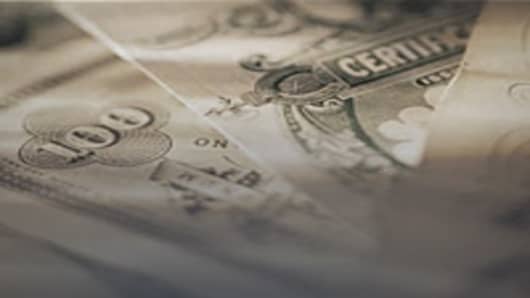Prices for U.S. Treasurys jumped on Friday and yields fell to their lowest this year after data showed far fewer jobs were created than expected in March, fueling worries the beleaguered labor market is still struggling.
The Labor Department said the U.S. economy produced just 88,000 new jobs last month — less than half the 200,000 expected in a Reuters poll, and below even the lowest estimate in the survey.
"It caught a lot of people offside and they are scrambling to get back into bonds," said Bill Irving, portfolio manager at Fidelity Investments in Merrimack, New Hampshire.
"The pace of growth will be slow but we will still get 2 percent. Yields will remain very low, but I don't expect we will get back to the record lows we saw last summer," Irving said.
Benchmark 10-year Treasury notes rose 22/32, letting their yields fall to 1.692 percent from 1.76 percent late Thursday and from 2.06 percent less than four weeks ago.
Analysts argued the weak report would likely keep the U.S. Federal Reserve buying bonds to try to keep the economy on a growth path.
"Today's report pushes out the date at which the Federal Reserve may reduce its purchases of securities," said Brian Jacobsen, chief portfolio strategist at investments group of Wells Fargo Funds Management in Menomonee Falls, Wisconsin.
The Fed is buying $85 billion of Treasurys and mortgage-backed securities each month to boost growth and hiring.
Friday's data came after other labor market indicators this week, including jobless claims, which also pointed to a stumbling recovery.
With investors also still worried about the euro zone, days after bruising negotiations for a Cypriot bailout, analysts say the Fed will keep interest rates low for a long time to buoy growth.
As a result, "the market has been rallying and rates are much lower than what would have been expected," said Tanweer Akram, senior economist for global rates, fixed income at ING Investment Management in Atlanta.
The price of the 30-year Treasury bond rose 2-22/32 and its yield fell to 2.858 percent from 2.99 percent late on Thursday and 3.26 percent nearly four weeks ago.
"Yields are returning to the lower levels where they should be," said Robert Tipp, chief investment strategist at Prudential Fixed Income in Newark, New Jersey, with more than $1 trillion in assets under management.
Ten-year Treasury yields slipped below 2 percent in mid-March and have traded there ever since, but they might not go much lower, said Daniel Heckman, senior fixed-income strategist at U.S. Bank Wealth Management in Minneapolis.
"The bond market has gotten a little bit ahead of itself," he said. "I would not be chasing it at this point. Yields have built in quite a bit of economic weakness here."
A test of the market's appetite for Treasurys at these new high prices and low yields comes next week when the Treasury will sell three-, 10- and 30-year government debt.
"If demand at the Treasury auctions is weak, that could show investors have gotten a little too pessimistic on the economy and too bullish on the bond market," he said.


